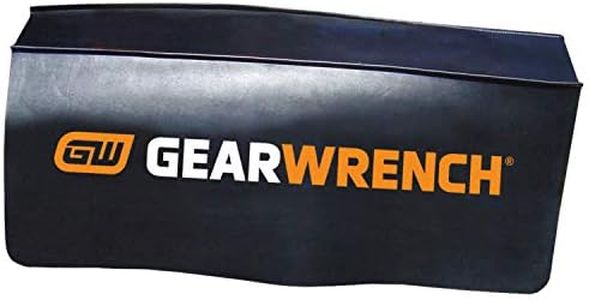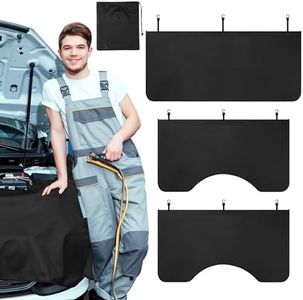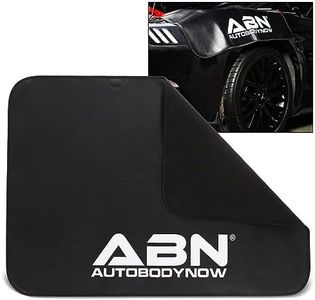We Use CookiesWe use cookies to enhance the security, performance,
functionality and for analytical and promotional activities. By continuing to browse this site you
are agreeing to our privacy policy
10 Best Mechanics Fender Covers
From leading brands and best sellers available on the web.Recommended lists
Buying Guide for the Best Mechanics Fender Covers
Picking the right mechanics fender cover is important for anyone who wants to protect their vehicle's finish while working under the hood. Whether you're a professional mechanic or a hobbyist, a good fender cover prevents scratches, grease stains, and other damage that may happen during repairs or maintenance. With so many options out there, it’s useful to know which features matter most to help you find a cover that suits how you work and the kind of vehicles you usually work on.MaterialMaterial refers to what the fender cover is made from, such as vinyl, cotton, or synthetic blends. This is important because different materials offer varying levels of durability, grip, and protection. Vinyl is tough and resistant to liquids, making it great for heavy-duty use, while cotton is softer and may be less likely to scratch paint but doesn’t handle grease as well. For someone who works on cars often and wants maximum protection, a thick, heavy-duty vinyl or a padded synthetic cover is ideal. Those only doing light maintenance might prefer a soft cotton or blended fabric.
Grip/BackingGrip or backing is about how well the cover stays in place on the fender once you put it there. Some covers have non-slip backings or magnets to hold them securely. This is important because a cover that slips can be annoying and less protective, possibly letting dirt or tools slip under and scratch your car. If you’re frequently moving around or using tools on top of the cover, a strong grip or useful magnets can be a real advantage. If you want to avoid magnets due to concerns about scratching, look for covers with textured, non-slip materials on the back.
PaddingPadding describes whether the cover has a cushioned interior. Padding is crucial because it creates a soft barrier between your tools and the vehicle’s paint. More padding offers better protection against dents or deep scratches, especially if you rest heavy parts or tools on the fender. People working with heavier components or doing long repairs should look for thick padding, while for occasional, lighter tasks, minimal or no padding may be sufficient.
SizeThe size of the fender cover refers to its length and width. This matters because it determines how much of the vehicle surface the cover will protect. Large covers provide better protection, especially for bigger cars or trucks, while smaller covers are easier to store and may be fine for compact vehicles. Before picking, consider the type of vehicles you’ll work on most—choose a size that gives full coverage without getting in your way.
Ease of CleaningEase of cleaning means how simple it is to remove grease, oil, and dirt from the cover. Some covers can be wiped clean, while others are machine washable. This is important as a clean cover keeps your work environment neat and ensures you don’t transfer grime to your car’s finish. If you know you’ll often deal with oily messes, opt for a cover that’s easy to wipe off or toss in the wash, to save yourself effort in the long term.












